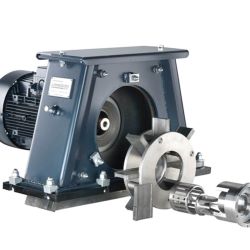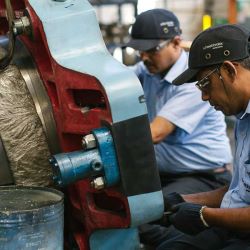Flexible Machine Design
Various workpiece or nozzle lifting and lowering devices are integrated depending on the arrangement of the bores and apertures to be blasted.
Several simultaneously working blast stations are arranged in a series determined by the desired production rate. After blasting, the bores and workpieces are cleaned of abrasive either by compressed air or swivelling the part.
The machine can be delivered as a stand alone unit where workpieces are lifted to the nozzles or where nozzles move towards the workpiece, or with a fully automated transport system integrated in a production line.
The AIC machines follow the Module8 principles.
The transport system can be adapted, or if necessary replaced, by other transport devices depending on your requirements for internal blasting.
Airblast Nozzle Choice
For every bore and aperture type and position on the workpiece, different blast nozzles are needed. A range of straight and curved standard blast nozzles are available. For special applications where these nozzles are not sufficient, Wheelabrator Group can develop customised blast nozzles.
Blast Lances
For the direct treatment of internal areas, stationary or rotating blast lances are also used. The blast lances are moved into the bores so that a targeted and direct blasting of the internal area is possible. Blast lances can be used for bores and apertures to a minimum size of 5mm.


